HP Envy 17 3D Review
HP Envy 17 3D
Its combination of premium styling and features with an impressive Full HD 3D screen, wireless stereoscopic glasses and Blu-ray player make this the ultimate 3D entertainment laptop.
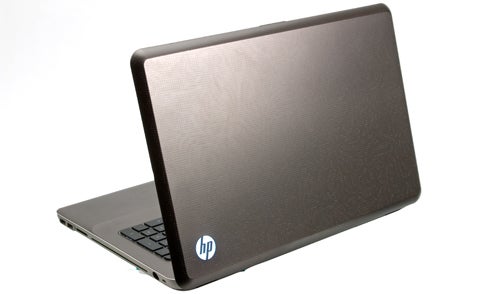
Verdict
Pros
- Great design
- Good build
- Excellent connectivity
- Full HD, 120Hz screen
- Comfortable wireless glasses
Cons
- Minor touchpad issues
- Gets very warm
- Expensive
Key Specifications
- Review Price: £1599.00
- Aluminium lid and keyboard surround
- 17.3in, Full HD, 120Hz 3D screen
- Wireless stereoscopic glasses
- Intel Core i7 CPU
- USB 3.0 & eSATA 2
Even ignoring its 3D credentials, the Envy 17 3D is an impressive beast in almost every regard. Starting off with its design, the aluminium-finished lid features a ‘Carbon Relic’ pattern imprint that’s far more durable than the usual shiny plastic and won’t pick up even a hint of fingerprints. Visually we prefer our metal brushed, but the pattern is still very easy on the eye and is nicely offset by the HP logo backlit in white in the lid’s lower corner. The laptop also comes with a black velvet carrying pouch, which helps to protect it while on the move and adds considerably to the premium feel.
Opening the machine up, it incorporates a MacBook-like sense of minimalism with the keyboard area unbroken by anything aside from the sleek power button. The black keyboard is matched by the screen’s bezel of the same colour. Again, the mixture of black plastics and aluminium gives a quality look and feel, with subtle white-backlit status indicators for power and hard drive activity. The mute shortcut on the keyboard and touchpad de-activation indicator are both backlit in orange.
Build quality is good throughout. The centre of the lid flexes, but this does not impact the screen and is a flexibility feature rather than a negative. There’s also some flex in the keyboard, but it’s so minor that it’s not an issue. Nowhere else on the body of the Envy 17 3D did we find the slightest hint of creak or flex, and it makes a very solid impression.
Specifications are good, though you wouldn’t expect any less from a machine costing over £1,500. For processing duties we have an Intel Core i7 720QM. This 1.6GHz quad-core will turbo-clock up to 2.8GHz, and until the recent arrival of Sandy Bridge (as found in the MSI GT680) was one of the top mobile CPUs available. 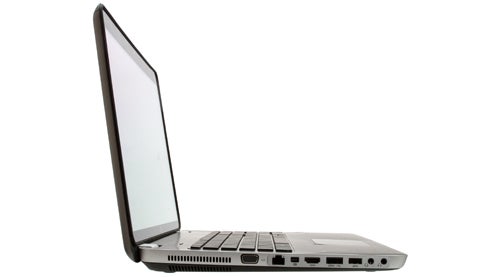
It’s backed by a fairly standard 4GB of RAM, though if you’re buying in the US you can configure this up to 8GB. There’s also a 500GB hard drive, thankfully of the speedier 7,200rpm variety, which we’re seeing as standard ever more often these days. In the US, you can get up to 2TB or storage for a mere $200, or go for a 160GB SSD and 640GB, 7,200rpm data drive combo for $310. We really wish HP would follow Dell in making its UK laptops customisable, and stop treating us like second-class consumers. 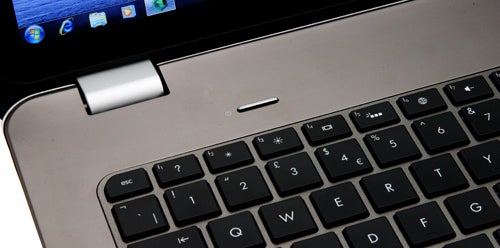
Graphics are handled by an AMD Mobility Radeon HD 5850 with 1GB of RAM, which is just about adequate to classify this laptop as a light gaming machine. After the rather disappointing ViewSonic ‘Fuzhion’ V3D241wm though, we were interested to see how this AMD-based system as a whole would cope with 3D. A high definition webcam and attractive, slot-loading Blu-ray drive round out the Envy 17 3D’s high-end appeal.
After wooing us with its sleek design and high specifications, HP doesn’t let up when it comes to connectivity. For storage and peripherals, we have two USB 2.0 ports, one combined eSATA/USB 2.0 port, a USB 3.0 socket (as with the Lenovo ThinkPad W701ds, distinguished only by the subtle super-speed logo rather than the more usual blue livery) and a memory card reader. 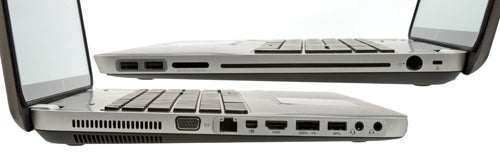
Audio is catered to with dual headphone sockets, one of which also carries digital audio and doubles as a microphone jack. On the video front, you’ll find a mini DisplayPort, HDMI v1.3 and good old VGA, while networking and wireless are handled by Gigabit Ethernet, Wi-Fi N and Bluetooth. Aside from maybe an ExpressCard slot (and we don’t even see a particular need for one of those with everything on offer) this Envy really isn’t wanting for anything. 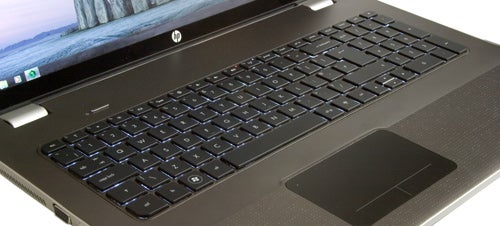
HP’s excellent reputation for keyboards is done proud by this full-size example. Though it’s isolation-style and feedback is consequently shallow, there’s a positive click to each well-spaced key. Combined with their soft finish and the textured palm-rests, the Envy 17 3D is a pleasure to type on. Furthermore, the keyboard is backlit in white for those late-night gaming (or typing) sessions. 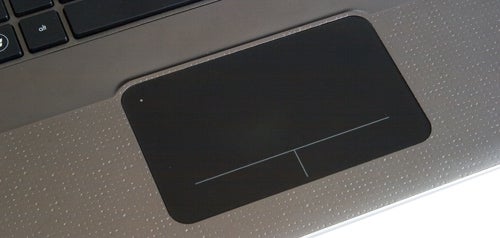
Likewise, the multi-touch ClickPad (so called because it integrates its buttons into its active area, a la Apple’s MacBook range) is generally great to use. It’s responsive, large enough that gestures are effortless and sports a smooth surface, while its ‘buttons’ offer good feedback. However, to a lesser extent it does suffer from the same issues we experienced with the ClickPad on the HP tm2, where on rare occasions it would register a press on one of its ‘buttons’ as a touch and move the cursor. 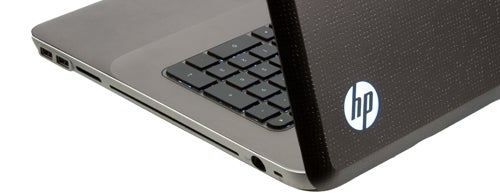
We found the pad didn’t really interfere with typing, but HP’s solution for deactivating it is as convenient as it gets: simply double-tap on the pad’s top left corner, and an orange LED will indicate its inactive status.
It’s no longer a rarity to find good audio performance on a high-end laptop, with the Dell XPS 17 and MSI GT680 being but two recent examples. HP continues this trend in its Envy 17 3D, with a Dr. Dre-certified Beats 2.1 setup. The speakers make up in finesse what they lack in volume, while the integrated ‘Triple-bass Reflex’ subwoofer ensures decent oomph at the bass end.
Thankfully, once you get past the reflections caused by its seamless glass front, the Ultra BrightView 17.3in display does little to let the side down either. With a glorious Full HD resolution, this 120Hz panel is definitely among the better TN-based screens we’ve seen on a laptop. 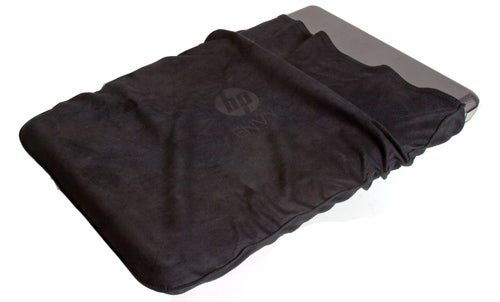
Colours are bright and punchy and contrast is good, for while there’s the usual lack of distinction in the lightest tones, there’s plenty of dark detail. Backlighting is consistent and there’s little sign of banding or other artefacts, while horizontal viewing angles are also decent.
True graphics enthusiasts will still want a superior solution such as a rare (in laptops) IPS-panel or the more common high-end solution of RGB-LED backlighting (as found most recently in the praise-worthy Lenovo ThinkPad W701ds), but for general entertainment this does the job admirably.
D glasses for HP Envy 17 on a gray cleaning cloth.” width=”300″ height=”187″ class=”align size-medium wp-image-214684″>
In 2D mode, then, the Envy 17 3D holds up very well indeed – but what about 3D? On the hardware side of things, HP provides one own-brand pair of wireless stereoscopic glasses with its laptop. These come in a silver velvet carrying case and include three different sized, interchangeable nosepieces.
Unfortunately, the glasses run off a single CR2032 cell battery rather than being rechargeable. There’s no on/off button either, as the glasses activate automatically when in range of the IR sensor, though this does mean less hassle is involved than usual: just put them on and they work. The glasses are also well built, reasonably stylish and very comfortable.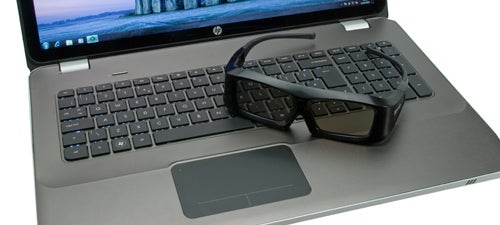
Inevitably, the Envy’s display suffers from some crosstalk in 3D, but the glasses don’t darken things too much and the screen’s vivid colours and deep blacks help to make the overall experience a pleasant one.
Unlike the disastrous ViewSonic ‘Fuzhion’ V3D241wm, HP has opted for the far more polished Tri-Def 3D software to turn everything into stereoscopic goodness. Upon installing the software (only necessary if working from a fresh Windows installation, as it’s preinstalled), it automatically detects it’s on an Envy laptop and activates for free, rather than requiring the usual $49 fee. 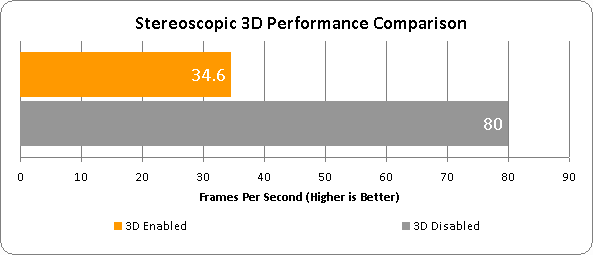
A trailer of Dreamworks’ Megamind 3D comes pre-installed to check out the effect, and shows this Envy off impressively. Every game we tried to run in 3D also worked beautifully, with the only limitation being the Radeon Mobility HD 5850’s power – or lack thereof. In fact, anything more demanding than TrackMania Nations Forever just isn’t worth trying, as at a lowly resolution of 1,280 x 768, it dropped from 80 frames per second (fps) down to 34.6fps with stereoscopy enabled, though admittedly that was with anti-aliasing turned on.
D glasses used with HP Envy 17 3D laptop.” width=”300″ height=”127″ class=”align size-medium wp-image-214699″>
While it’s slightly disappointing that its 3D gaming capabilities aren’t a little more advanced considering the £1600 asking price, at least 3D Blu-rays and casual or undemanding games are as good as we’ve experienced on a laptop.
After the performance behemoth that is Sandy Bridge (as seen in the MSI GT680), everything else is going to seem a tad underwhelming. Nevertheless, the quad-core Core i7 720QM powering the Envy 17 3D-1195ea is still one of the most powerful mobile processors around and will handle mosts task with ease. 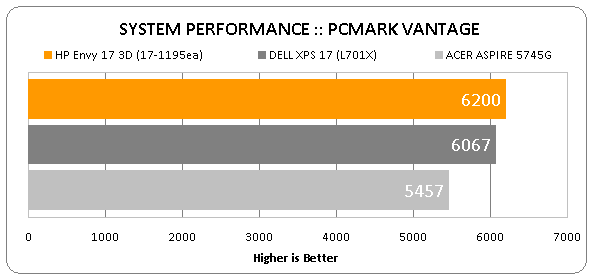
In PCMark Vantage its lead over the dual-core Core i5 460M found in the {linkout:https://www.trustedreviews.com/laptops/review/2010/12/02/Dell-XPS-17–L701X-/p1 XPS 17 isn’t shown off properly, but more intensive use (like video encoding) will make full use of the extra physical cores and Hyper-Threading to provide eight virtual cores. 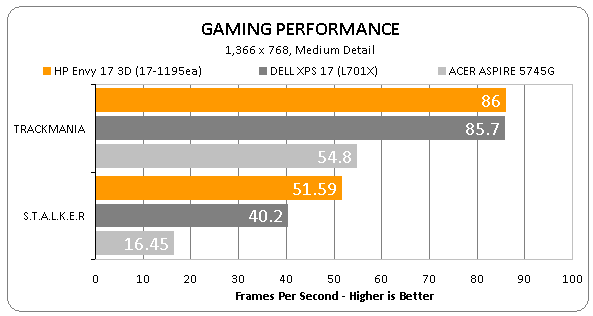
In 2D gaming, this HP’s AMD Mobility Radeon HD 5850 can handle some reasonably demanding titles in lower resolutions. For example, Stalker: Call of Pripyat ran at a perfectly smooth 53fps on Maximum detail and DirectX11, albeit at 1,280×768. Crysis on High detail is pretty much out of the picture, but many modern games will at least run if you’re willing to accept a few compromises.
It’s worth noting that although the Envy 17 3D stays reasonably quiet even under load, its left side gets warm enough to act as a hand-warmer in winter, which is not necessarily a good thing. 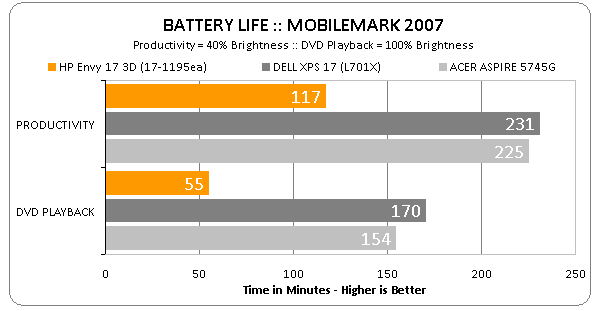
Battery life is, unsurprisingly, the weakest area of the Envy 17 3D. Its 62Wh/5,225mAh battery only managed just under two hours in Mobilemark’s semi-intensive Productivity test, while with the screen at full brightness, watching a DVD brought this down to just 55 minutes. Good luck watching a 3D Blu-ray without a power socket in the vicinity!
To be fair to HP, these kind of results are hardly unusual on a desktop replacement, but if you’re looking for 3D on the go, the Acer Aspire 5745DG is by far the better choice – and considerably cheaper at £600. However, the Envy 17 3D does thoroughly trounce it in build, design, connectivity, performance and quality, not to mention actually sporting a Blu-ray drive. 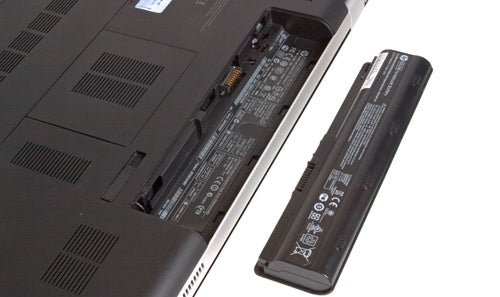
A more viable comparison is with the 3D version of Dell’s XPS 17. Using Nvidia’s rechargeable wireless glasses in conjunction with a 17.3in, Full HD, 120Hz display, you can get a very similar configuration for £1,500 compared to the HP’s £1,600. You’ll get 4GB of RAM, a 500GB, 7,200rpm hard drive, HD webcam, Blu-ray drive, backlit keyboard and aluminium lid. Connectivity will also be very similar, and the Nvidia GT 550M graphics should give roughly comparable performance. However, not only do you pay £100 less and gain more flexibility, but you also get a newer Sandy Bridge Core i7 2620M CPU, which should give both faster processing and better battery life, especially with Nvidia’s graphics-switching Optimus thrown in. 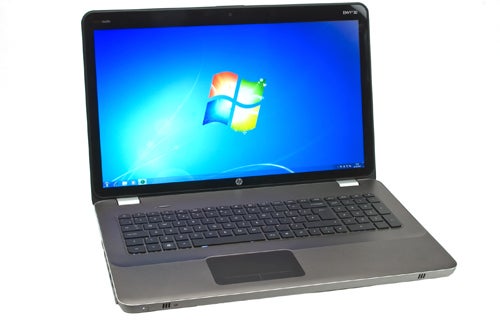
Verdict
HP’s premium Envy 17 3D oozes class, is stuffed to the brim with features and connectivity, and offers powerful specifications. It includes a stylish metal-clad body, an impressive Full HD, 120Hz screen and accomplished 2.1 speakers, and with its comfortable 3D glasses provides one of the better mobile 3D experiences going. However, you pay a considerable premium for the same basic specifications that others better for less, so it’s not the best offer around.
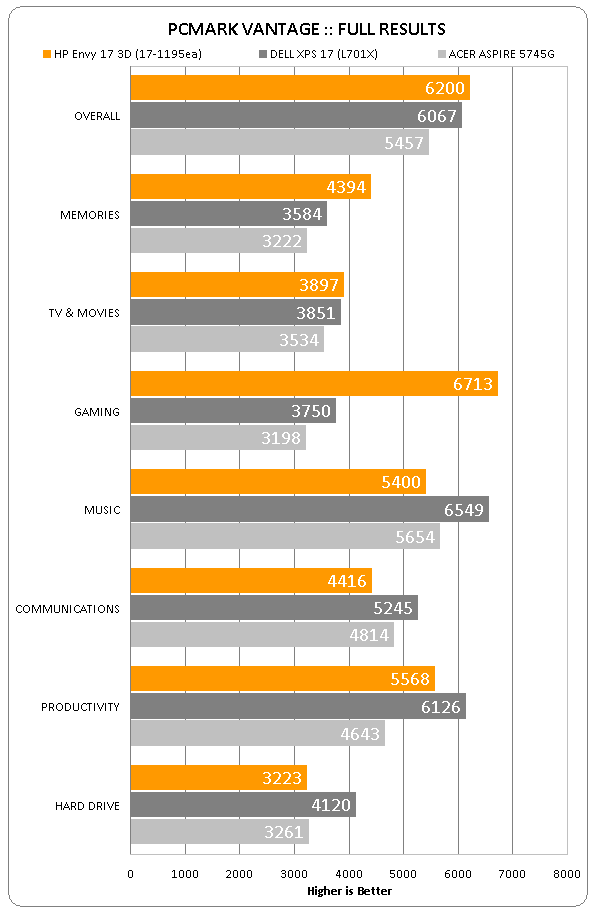
How we test laptops
Unlike other sites, we test every laptop we review thoroughly over an extended period of time. We use industry standard tests to compare features properly. We’ll always tell you what we find. We never, ever, accept money to review a product.
Trusted Score
Score in detail
-
Performance 8
-
Design 9
-
Value 6
-
Features 10
-
Battery Life 4

